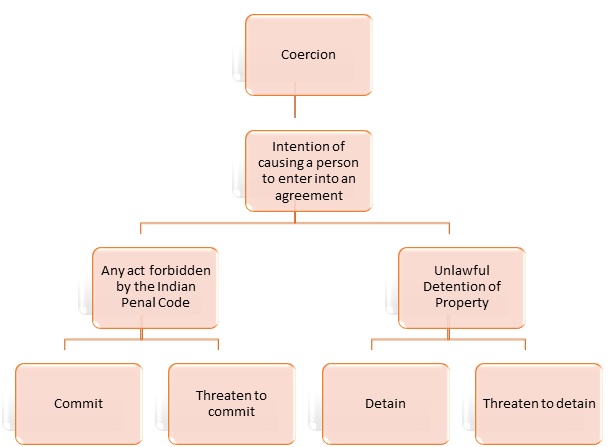The Doctrine of Privity and its Exceptions
In the previous article of #TuesdayTeachings we understood aspects of consideration under section 2(d) and section 25 of the Indian Contract Act. In today’s article we will discuss the concept of The Doctine of Privity.
The doctrine of privity of contract states that
the rights conferred and obligations imposed by a contract are confined to the
parties of a contract. Any third person is not entitled or bound by it.
Therefore, no one except the parties to a contract can sue or be sued for
enforcement or breach of contract.
The doctrine has two aspects;
Firstly, no third party is entitled to receive the
benefits of a contract entered into by two or more than two parties. The
contract may confer some rights or benefits to any third party but that party
cannot sue for claiming those rights or benefits.
For example, A makes a contract with B to pay C Rs. 1000
every month if B signs the power of attorney of his land in the name of A. Then
subject to the exceptions of the doctrine, C is not entitled to recover
any damages from A because C was not a party to the contract.
Secondly, no third party is liable under a contract
entered into by two or more than two parties. The parties to a contract cannot
impose a liability on a third party to fulfill the contract. For example, C has
no liability for a contract between A and B and thus cannot be sued by either
of them for the same.
This doctrine of privity was laid down in the case of Tweddle
v. Atkinson. In this case, the daughter
of one D was supposed to marry the plaintiff. In consideration of this intended matrimony, the plaintiff’s father
and D entered into a written agreement that stated that both of them would give a
certain amount to the plaintiff. D failed to do so and consequently, the
plaintiff initiated action against him. It was held by the Court of Queen’s
Bench that “no stranger to the consideration can take advantage of a contract
although made for his benefit”. Although the sole object was the benefit of the
plaintiff, he was not permitted to initiate charge because the contract was not made with him but his
father.
This principle was further affirmed in Dunlop Pneumatic
Tyre Co v. Selfridge & Co Ltd. Dunlop who was a tyre manufacturer made a
contract with Dew, a trade purchaser for the sale of tyres at a discounted
price which required that they would not resell the tyres than a listed
price. The agreement also required that if any reseller intended to buy the
tyres from Dew then they had to agree to a similar condition. Dew sold the
tyres to Selfridge and made an agreement with them that they will not sell the
tyres below the listed price or they will be liable to pay damages. Selfridge
failed to fulfill the terms of the agreement and sold the tyres at a price lower than the listed price. Dunlop initiated action to receive damages. It was
held by the court that Dunlop cannot recover damages from Selfridge.
The court stated two reasons for the decision;
1.
Only a person who is a party to a contract can
sue on it.
2.
If a person with whom a contract not in writing has
been made, then to be able to enforce it, consideration must have been given by
him.
The contract was made between Dew and Selfridge and thus
Dunlop could not recover damages for it. This principle is applicable in India
subject to certain exceptions which are discussed further in the article. The
second reason is related to the doctrine of consideration which has already
been discussed in the previous articles.
Position in India:
Initial cases which ultimately established the position of
the doctrine of privity in India are;
1.
Jamna Das v. Pandit Ram Autar Pande.
X was lent Rs 40,000 by Y on the guarantee of her zamindari to Y. Consequently, the property was sold to Z by her for Rs 44,000 wherein she allowed Z to retain Rs 40,000 of the price to repay the loan. Y sued Z for recovering the loan money. It has held by the
privy council that he can not recover money from Z as he was not a party to the contract between X and Y. Lord McNaughten in his judgment said,
"The mortgagee has no right to avail himself of
that. He was no party to the sale. The purchaser entered into no contract with
him, and the purchaser is not personally bound to pay this mortgage debt."
A similar rationale behind decisions was also seen in
numerous cases of the high courts in India before Independence.
For example, State of Bihar v Charanjitlal Chadha,
AIR 1960 Pat 139, Krishna Lal Sadhu v Promila Bala Dasi, etc.
2.
M.C. Chacko v. State Bank of Travancore
The appellant was the managing director of the Highland
Bank. The appellant’s father guaranteed to pay any due amount to Kottayam Bank
on behalf of Highland Bank concerning an overdraft arrangement between the two
banks. He gifted all his properties to his children by way of a gift deed
according to which any liability to Kottayam Bank should be met by the
appellant either from the bank or from the share of the property gifted to him.
The Kottayam Bank attempted to hold the appellant and his family members liable
under the provisions of the deed.
It was held by the Supreme Court,
“Kottayam Bank not being a party to the deed was not
bound by the covenants in the deed, nor could it enforce the covenants. It is
settled law that a person not a party to the contract cannot subject to certain
well recognised exceptions, enforce the terms of the contract: the recognised
exceptions are that beneficiaries under the terms of the contract or where the
contract is a part of the family arrangement may enforce the covenant.”
Exceptions
The doctrine of privity has been applicable in India
although with some exceptions which have been introduced by the courts over
time. Some well recognised exceptions are-
1.
Trust-
The main exception of the doctrine of privity of contract is an obligation like trust created for the benefit of another person.
For example, X started a college and made Y the trustee. The provisions of the agreement specify that the trustee would deliver the proceeds to X during his lifetime and after his death to his wife Z. After X’s death the
trustee did not make good on this agreement and assumed ownership of the
college. The beneficiary i.e. Z can enforce the contract to the extent of her
rights in the trust deed.
To establish that trust has been created, it is important to authenticate that the promisee had an intention to enter into the contract
as a trustee. Such intention might be
inferred by the use of express words like trust or trustee, nearness of
relationship between the promisee and the beneficiary. A charge must be created
in favour of the third party.
A person in whose favour, interest, or charge in some
specific property has been created through a contract may execute the contract although he is not a party to the contract. A case in point is Nawab
Khwaja Muhammad Khan v. Nawab Hussaini Begum. In this case, the appellant
had promised the father of the respondent to pay the respondent an allowance called kharch-i-pandan
(personal allowance)- Rs500 a month in perpetuity if she marries his son. He also charged certain
properties with the payment granting power to Hussaini Begum to effectuate it. The
respondent and her husband separated after some time and she sued the appellant to recover her allowance. It was held
that although the respondent is not a party to the contract, she is capable of enforcing her claim. In the exact words of the bench,
“the agreement executed by the defendant(appellant)
specifically charges immovable property for the allowance by which he binds
himself to pay to the plaintiff(respondent); she is the only person
beneficially entitled under it.”
This exception was also recognized by the supreme court in
the case of M.C. Chacko v. State Bank of Travancore.
2.
Marriage settlement, partition, or
other family arrangements
A stranger to a contract may sue to enforce a benefit due
under an agreement created during marriage, partition, or any other family
arrangement.
For example, A makes an agreement with B regarding the
marriage of A’s daughter (who has not yet attained majority) with B. Then, A’s
daughter after attaining the majority can sue B for damages if he does not
abide by the agreement.
A landmark case regarding this exception is Shappu Ammal
v. Subramaniyam, ILR (1910) 33 Mad 238. Two brothers entered into a contract
after the partition of joint property to invest a certain amount in equal
shares the maintenance of their mother. The mother was held entitled to sue her
sons to have them invest in the shares in her interest even though she was not
a party to a contract.
3.
Collateral Contract
A collateral contract is a contract between a third party
and one of the parties of the main contract which may associate with the main
contract and enable the third party liable to sue and be sued under the main
contract. These kinds of contracts are used to impose obligations on any third
party which is not involved in the main contract.
In a case, Charnock v. Liverpool Corpn., the
plaintiff’s car was damaged and was sent to a garage by the insurance company
for repairs. The repair usually takes 5 weeks however the garage took 8 weeks
to repair the car. The plaintiff sued the garage and it was contended by the
garage owner that the contract was with the insurance company and the plaintiff
has no right to sue. It was held by the court that there was a collateral
contract between the insurance company and the plaintiff and thus the plaintiff
was entitled to sue the garage owner.
4.
Acknowledgment and Estoppel
A third party to a contract can sue a party to a contract
where that particular party is supposed to pay the third party and
he/she acknowledges it to that third party thereby creating a legal obligation
upon him.
For example, A sells a property to B under a registered sale
deed and requests B to pay a certain amount of money to C as he is A’s
creditor. B makes part-payments in the starting and informs C that he/she is
not able to pay the whole amount currently and it will be paid in due course of
time. However, B fails to do so. C can sue B on this account. Had B not
initiated payment against C then C would not have been entitled to bring action
against B, but B acknowledged the promise to C by initiating payment and
further informing that the remaining arrears will be paid in due time. Therefore,
C is entitled to sue B for non-performance.
Another illustration in this regard, where acknowledgment by
conduct can be observed is the case of Kshirode Behari Dutta v. Mangobinda
Panda. In this case, the tenant and sub-tenant of a piece of land entered
into an agreement according to which the sub-tenant shall pay the tenant’s rent
to the owner directly. All the parties acted according to the agreement. It was
held that the sub-tenant had acknowledged the agreement by conduct by acting
according to it and thus now he was estopped from taking the defense that there
was no direct contract between the sub-tenant and the landlord to deny his liability of paying the rent to the owner.
5.
Covenants running with the land
The doctrine of privity may also be relaxed in regards to
principles of property law, specifically the transfer of immovable property. A
person who purchases land with notice that any owner of such property is obliged to perform certain responsibilities due to an agreement or covenant shall be liable for
such duties even though he might not be a party to such agreement or covenant.
This principle was laid down in Tulk v. Muxhay.
This principle can be seen illustrated in the case of Smith
& Snipes Hall Farm Ltd v. River Douglas Catchment Board. The board i.e.
the defendants made an agreement with certain landowners adjoining the stream
to maintain the banks of the stream in a good condition. The landowners paid
their proportionate share. Subsequently one of the landowners sold his land to
another (the first plaintiff) who in turn sold it to another person (the second
plaintiff). The negligence of the board in maintaining the banks resulted in them bursting and flooding the lands. Both the plaintiffs were
strangers to contracts but the court of appeal allowed them to sue the board as
the whole arrangement was for the owners of the land whoever they might be.
A close study of all the cases mentioned above helps greatly in understanding this particular doctrine in detail- its elements/requirements. The next article will deal with the provisions relating to the competence of parties. Stay tuned for it!
If you have any query please feel free to contact us at lawvastutah@gmail.com.
BY,
LAWVASTUTAH
References:
1.
Indian Contract Act, 1872.
2.
Pollock & Mulla, The Indian Contract and Specific Relief Acts, 16th
edition.
3.
Avtar Singh, Contract and Specific Relief, 12th edition.
4.
Anson’s Law of Contract, 29th edition.
5.
Halsbury’s Laws of India Contract, 2e 2015.
6. Tweddle v. Atkinson [1861] EWHC J57, 1 B&S 393
7. Dunlop Pneumatic Tyre Co Ltd v. Selfridge
& Co Ltd [1915] UKHL 1, [1915] AC 847
8. Jamna
Das v. Pandit Ram Autar Pande (1916) ILR 38
All 209
9.
M.C. Chacko v. State Bank of Travancore (1970) AIR 500, 1970 SCR (1) 658
10.
Nawab Khwaja Muhammad Khan v. Nawab Hussaini Begum (1910)
12 BOMLR 638
11. Charnock v. Liverpool Corpn. 3 AII ER 473; 1 WLR 1498 at 1507, CA
12. Kshirode Behari Dutta v. Mangobinda Panda AIR 1934 Cal 682, 152 Ind Cas 351
13. Tulk v. Muxhay, EWHC Ch J34; (1848) 41 ER
1143
14.
Smith and Snipes Hall Farm Ltd v. River Douglas Catchment Board [1949] 2
KB 500



Comments
Post a Comment